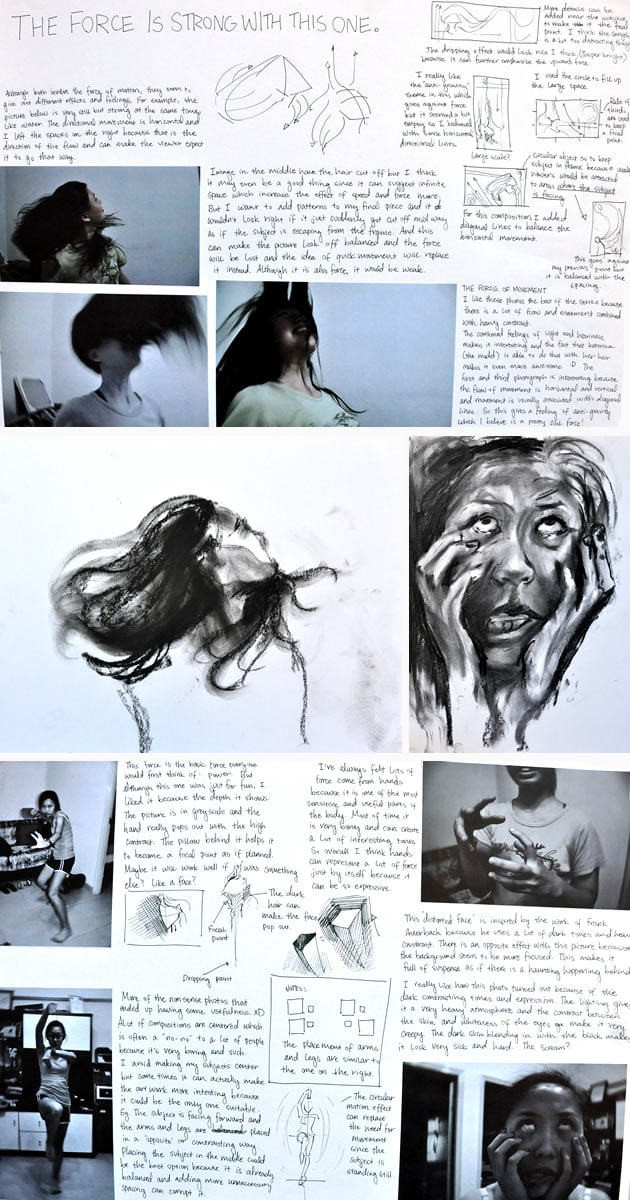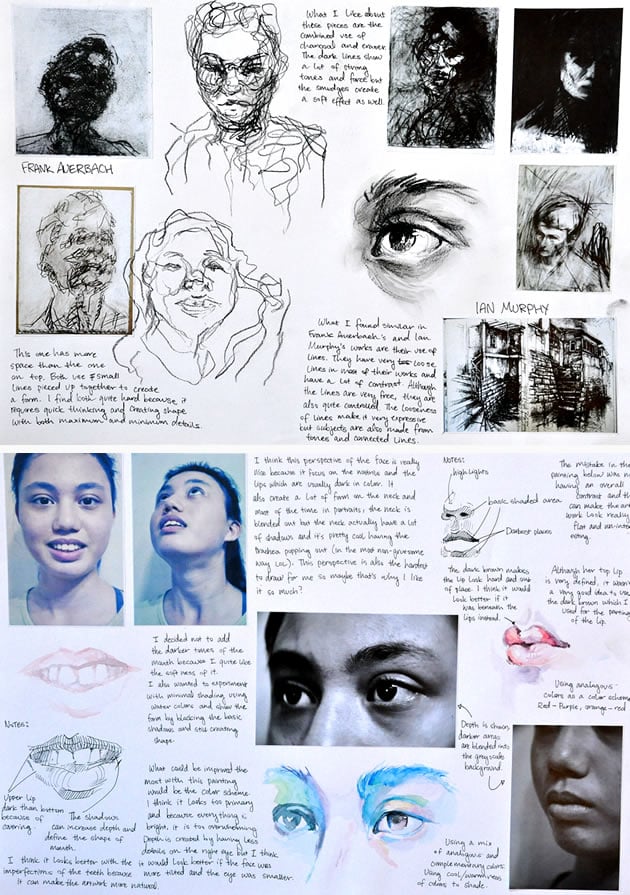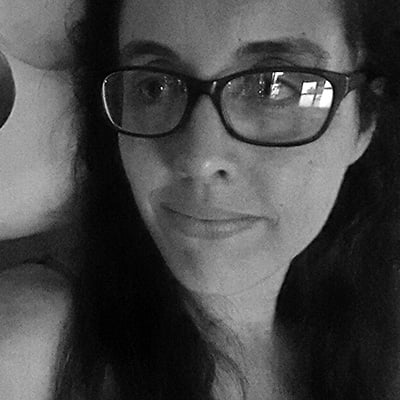Last Updated on April 2, 2023
This Edexcel GCSE Art exam was completed by Samantha Li, while studying at West Island School, Pokfulam, Hong Kong. Samantha was awarded full marks for her examination, gaining 100% (A*) overall. She explored a fantasy / spiritualistic theme, interpreting the set starting point ‘Force’.
Two of Samantha’s sketchbook pages are included in our new book: Outstanding High School Sketchbooks. This book has high-resolution images so that fine details and annotation are clear, making it an excellent resource for students and schools. Learn more!
Many students panic when their Art exam paper arrives. They worry that they won’t be able to come up with a creative interpretation and sometimes spend weeks fretting over their ideas. Samantha’s project is a superb reminder that the best way to approach a topic is to ensure that it is grounded in first-hand observation, that you enjoy the process and that you craft a personal, individual response.
We were lucky enough to interview Samantha about her project. Her answers are below:
What was your GCSE Art exam topic and how did you interpret this?
Samantha: The exam topic was ‘Force’ and the first thing I thought of was to do with Star Wars, but that was irrelevant! Force can be linked with anything really, so my concepts were generated randomly without any restrictions. From brainstorming, I listed words relating to forces such as physics, movement, nature, strong/gentle, internal/external, and anti-force. I tried to avoid topics that are cliché.
In the end, I went with the concept of ‘anti-force/upside down force’. This reminded me of gravity, which led me to the idea of anti-gravity and space! I had a hard time choosing which of the two concepts to paint for the exam so I painted both.
The first painting (the vertical image at the end of this article) has a fantasy/spiritual theme. I chose gentle colours and created contrast mainly through complementary colours. I used long brush strokes to create movement, and tried to express transparency through subtle changes in colour and tone.
The second painting has a heavier feeling, while keeping to the concept of anti-gravity. It is more straightforward, as I used denser shadows and sharper lines. I actually like the second piece better because I was more confident when applying darker tones and used more materials.

Which artists did you study as part of your GCSE Art exam?
Samantha: Frank Auerbach has a very free-flowing style that helped me ‘let go’. The lines in his sketches are broken and fragile, contrasting with the dark tones, weighing down the subject within. A mixture of both light and heavy is often hard to achieve, so it allowed me to experiment with pressure, angle, and speed. I decided to research Auerbach because the technique he used is a completely different approach to what I am used to, which I find intriguing.
Edvard Munch and Laura Ford were two suggestions from the exam booklet. Both artists portray some kind of grim imagery in most of their works that provoke feelings of misery and shock. As a horror fan, I was captured by Laura Ford’s realism and dynamic movement in her ‘Weeping Girl’ sculptures. It was like watching Alice losing her way from Wonderland and ending up in Silent Hill. And Edvard Munch’s use of colors and composition gave his painting ‘Workers on their way home’ a sinister effect.
Carne Griffiths and Silvia Pelissaro (also known as Agnes-Cecile) are popular artists that I discovered online. They have a lot of similarities and what I love the most is their use of colors and pattern. As someone completely new to watercolors, their works are highly inspiring and delicate.


What advice do you have for other high school Art students who wish to gain excellent grades?
Samantha: The major focus in GCSE art is experimentation and introduction to how artistic development works. The criteria is actually quite simple if broken down into four steps: research, record, experiment, and reflect. I found the recording part the hardest because learning comes naturally and, as most artwork has similar qualities that makes them great (such as contrast, complementary colors, etc), I always end up writing about the same things over and over again. But that’s okay! Looking back at the stuff I wrote, I can’t help but laugh how lucky I am that the examiner and my teacher liked my strange sense of humour!
During the process of making, take time on planning the artwork such as composition, atmosphere (warm? cold?) and style. Quality over quantity! Don’t be afraid to put more time into a single artwork. Go heavy when applying lines/paint and this will save you a lot of time.
Last but not least – you probably know this deep down already – don’t be afraid to speak up and declare what you like or dislike. For example, if you want to draw a purple llama, then do it. If your friend draws a dinosaur, then he/she doesn’t love llamas as much as you!
Note: We have a special article for students who wish to draw purple llamas and dinosaurs coming soon!

If you enjoyed this article, you may also like to view Samantha’s GCSE Coursework project (she was awarded full marks for this as well).
You may like to see more of our featured painting and drawing projects from high-achieving Art students around the world.

